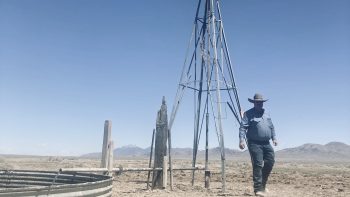Indian cowboys take bull by the horns
TEXT OF STORY
Stacey Vanek-Smith: Cattle are sacred to many Hindus and are part of the scenery in many of India’s big cities. They roam the streets, often creating traffic jams. And as Raymond Thibodeaux reports, city leaders are trying to fix that.
Raymond Thibodeaux: At a busy vegetable market in India’s capital, about a dozen stray cattle munch on huge piles of corn husks, cabbage leaves and other food scraps left behind by merchants. But the luck of these cattle is about to change.
A team of eight cattle catchers surrounds a bull and ropes him by the horns, which just makes him mad. The bull lurches forward with his sharp horns as the men scramble out of the way. A crowd gathers, most of them cheering for the bull. It’s rodeo time at this market.
These are Delhi’s cowboys. The city government has hired dozens of these cowboys to wrangle cattle off its busy streets. Much easier said than done.
Somdutt is one of the cowboys. He says the crowds make his job more difficult and more dangerous.
Somdutt (voice of interpreter): The last time they had this raid at this market, the bull charged and about 25 people got injured immediately.
Once the cattle are caught, they’re loaded onto trucks and shipped to farms. Which is where they belong, says D.L. Sharma. He’s New Delhi’s chief veterinarian, and he’s leading the charge to rid the city of cattle. So far, he says about 100,000 have been taken off the streets. And that leaves about 20,000 more to be rounded up.
D.L. Sharma: Stray cattle on the roads are creating havoc. It is harmful aesthetically, economically, socially, environmentally — take it from any angle, it’s harmful.
Still, Sharma says getting rid of them is complicated by the fact that many of the cattle aren’t even stray. He says they belong to thousands of unlicensed dairies around the city that make an estimated $120 million a year selling milk and yogurt. The owners of those dairies let the cattle forage for themselves, taking advantage of a Hindu custom of feeding cattle as a spiritual good deed.
Again, chief veterinarian Sharma:
Sharma: Some of the Hindus think it’s better to feed the cow. It is in the traditions. So this way, the cycle is going on.
But if city officials have their way, the cycle will come to an abrupt end. They’ve vowed that by next year, Delhi’s streets will be cattle-free.
In New Delhi, I’m Raymond Thibodeaux for Marketplace.
There’s a lot happening in the world. Through it all, Marketplace is here for you.
You rely on Marketplace to break down the world’s events and tell you how it affects you in a fact-based, approachable way. We rely on your financial support to keep making that possible.
Your donation today powers the independent journalism that you rely on. For just $5/month, you can help sustain Marketplace so we can keep reporting on the things that matter to you.


















